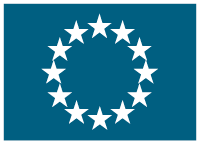Enabled Media
Start date: Aug 1, 2015,
End date: Feb 29, 2016
PROJECT
FINISHED
The Project – ENABLED MEDIA – contributed to the acknowledgment of the importance of Media in the life and education of disabled young people through an exchange and collaboration between disabled and non-disabled young people and their carers
Research by the World Health Organisation shows that around 15% of the world population are disabled, equating to over 1bn people. Disabled adults are 3 times more likely to have heart disease, stroke, diabetes, or cancer than non-disabled adults.
They also often have to deal with secondary/ associated conditions (pain, fatigue, depression, weight gain, spasticity, seizures, balance and thermoregulatory problems) related to their disability.
By being physically active, studies have shown that these conditions can be eliminated or reduced. In addition the strength and stamina that is developed can help disabled people maintain a higher level of independence which increases self-esteem and self-confidence which can lead to education and employment opportunities
Research by the Sport and Recreation Alliance has shown that 86% of disabled people wanted to take up sport after the last Paralympics, but despite this, research by EFDS (English Federation of Disability Sport) shows that disabled people are half as likely to be active as non-disabled people. Their research also shows that disabled people are often marginalised by factors which include their disability, transport and communication. Many disabled people are simply unaware that activities are available for them in their area and they do not know that opportunities exist for ‘people like me’. Disabled people are often not engaged by communications that are targeted at disabled people because they are not interesting for those who don’t class themselves as disabled and not aspirational to those who do.
To address these issues two youth exchanges were organised involving different fields of Media, such as written, broadcast, and online media; the first youth exchange took place in Oxford, when the UK group welcomed a group from Spain; the second exchange took place in San Sebastian, Spain, when the Spanish group host the group from the UK. The activities allowed the identification of skills and potential in media and provided an opportunity to detect controversial issues concerning the media in the United Kingdom, Spain, Europe and all around the world.The participants had the opportunity to get an insight and gain experience from creating Media by producing, directing and shooting video and still pictures; making programme guides, posters, coordinating a social media campaign and designing websites.
The main aim was that disabled people learn to create Media about disabled people and for disabled people.
The activities promoted inclusion and integration in a partnership between disabled youth and non-disabled young people. The activities were monitored by, on the one hand, experts who have had to deal with disabled young people for a long time and on the other hand, professionals in the field of creation of Media. At the moment enabled communications and enabled media provided for disabled people are very limited and have a lot of shortcomings. This project opened new frontiers in both the field of enabled communications and disability sport, providing information for disabled people which was been designed by disabled people themselves. These enabled communications opened gateways for disabled young people removing some of the barriers to participation and reduced differences between able and disabled people.
The young people tried out their knowledge and skills by fulfilling the Media activity for a new Paralympic Sport and martial art, called Ikkaido, launched at the first ever Ikkaido European Martial Arts Championship for Disabled People. They created the programme guide, posters and advertising and the entrance ticket as written media; photography, video shooting and editing as broadcast media, coordinated the online media such as youtube, Pintrest, Twitter and Facebook, and made a webpage for online media of the event. All these activities were supported and assisted by professional help. The project raised the collective awareness towards the potential of the different fields of the Media and their effects upon the lives of disabled people
The project showed that disabled youngsters are able to share and take responsibility; that disabled and non-disabled young people can cooperate successfully; the importance of reaching out to people with a disability by enabling communication and providing information for disabled people in a way that can be accessed, used and understood by them and that integration and inclusion is achievable
This project showed that although disability can make things difficult, it does not make things impossible, that disabled people can participate, achieve and enjoy the feelings that achievement brings
Get Access to the 1st Network for European Cooperation
Log In
or
Create an account
to see this content
Coordinator
- http://www.disabilitykarate.co.uk
- 45 Mill Lane, OX3 0QBOXFORDBerkshire, Buckinghamshire and Oxfordshire (United Kingdom)
1 Partners Participants
- http://berabera.com
- San Sebastian País Vasco (Spain)
